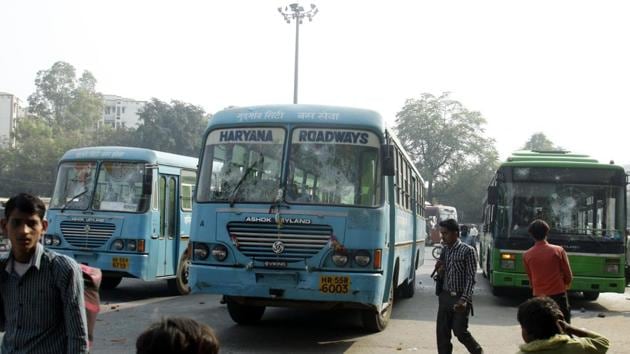Public buses improve road safety and shape urban development
A bus system is the backbone of any city, even those that have a Metro rail. London, for example, has over 400km of Metro tracks, yet 6 million people use buses everyday.
The big Monday morning news for me this week was that the city bus service in Gurugram is set to miss another deadline. While, the news may come as a shock to some, for me, I have lost track of how many deadlines this project has missed.

In fact, it was around the same time in 2008 that a friend of mine, working in a consulting company, called me seeking advice saying that he was working on a project to develop a city bus service in Gurgaon.
I provided whatever input I could, but I was pleasantly surprised that the city is taking such proactive steps in developing a public transport system. However, it’s been a decade and the city is still working on developing the bus system with no end in sight.
Gurugram needs anywhere between 1,000 to 2,000 buses against the 30-odd buses run by Haryana Roadways. Meanwhile, the city has happily built numerous flyovers and underpasses and has also got a number of new roads. But somehow, the conservation around buses always takes a back seat. A morning or evening stroll at Rajiv Chowk will reveal how desperately people in the city need buses as they climb atop buses just so they can sit.
A bus system is the backbone of any city, even cities that have an excellent Metro rail system also have good bus system.
London, for example, has over 400km of Metro tracks, yet 6 million people use buses everyday as against three million Metro riders. This is because buses are flexible; they also act as a feeder service to the mass transit system. The impact of a bus system is felt beyond merely providing transportation service. Let me highlight its three main effects:
Improves road safety
A WRI-India research for the city bus system in Indore found that bus service saves, on an average, six lives every year in the city. This is based on the fact that prior to the introduction of a bus service in Indore, people were using autos and two-wheelers, which were involved in road accidents, while buses were not. Therefore, buses were the safest mode of transport in the city.
Gurugram will also witness the same kind of impact as people here use shared autos and two-wheelers as an alternative to buses.
There is tones of literature available globally advocating public transport as a road safety strategy.
Reduces air pollution
There is strong empirical evidence which shows that bus systems help improve air quality on two counts. First, shifting people to public transport helps reducing the total vehicle kilometres travelled (VKT) because one bus carries 60 passengers, while a car usually caters to one person. This helps in reducing emission. Second, the biggest exposure to air pollution happens when people commute, and this is where a bus makes a huge difference. A research by WRI-India found that in Delhi the safest vehicle in terms of exposure to pollutants is the bus, and therefore, when people travel in a bus they breathe less of toxic air as compared to other modes of transport. Further, any priority buses, be it bus lanes or queue jumpers etc. will further reduce the exposure to pollutants.
Shapes urban development
Janmarg, Ahmedabad’s bus-based mass transit system, has shaped the urban form of the city. Chandkheda, the south-east side of the city has seen rapid development ever since Janmarg became operational. The additional FAR given along the Janmarg for Transit Oriented Development is helping the city concentrate on high-density and mix-use development rather than sprawled development, which is not sustainable.
Again, the bus corridor in Surat is transforming the city landscape with the more redevelopment happening along the corridors. We all know that transport guides urban development, but it is public transport that shapes it.
The benefits of a good quality public transport system are beyond just providing mobility to the passengers. However, most of the times the conversation around public transport revolves around subsidy or viability gap, which has also been the case in Gurugram. Public transport should be seen as public good and government can easily support public transport by rationalising the taxation and the sector may not even require any subsidy.
In 2006, it took three weeks for two bureaucrats in Indore to develop one high-class city bus system. While in Gurugram, the bus service has become a never-ending exercise. It’s time for the authorities to wake up and realise its importance, else it will be too late for the city to even accommodate a public transport system.
(The writer is director of integrated transport, Wriindia)






